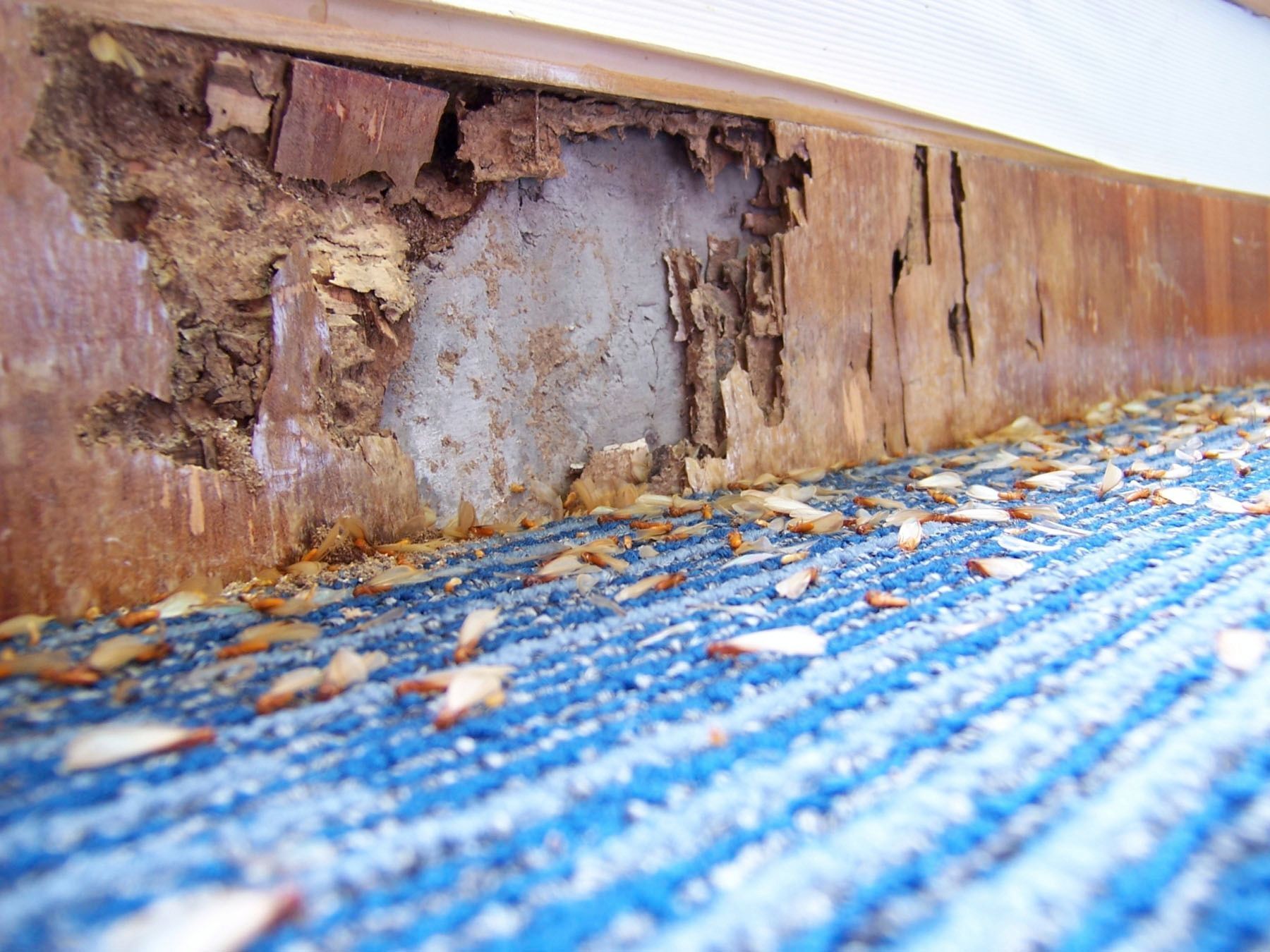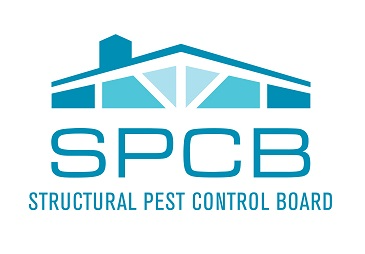September 2, 2025
A regular termite inspection is a crucial part of home maintenance, especially in regions prone to infestations. Termites, often dubbed "silent destroyers", can cause significant damage to wooden structures without immediate detection. These pests thrive in discreet, dark environments, making them a hidden threat to your home. The early recognition of termite activity can save you from exorbitant repair costs and maintain the structural integrity of your property. According to Today's Homeowner, around 600,000 homes in the U.S. are damaged by termites each year, highlighting the importance of inspections.
1. Visible Damage to Wood Structures
1.1 Sagging Floors or Ceilings
One of the first signs that might alert you to a termite problem is sagging floors or ceilings. Termites consume structural timbers, which can cause significant weakening over time. When these supporting structures are compromised, it results in a noticeable sagging of the floors or ceilings in the affected areas. This damage not only affects the aesthetic appeal of your home but also poses a safety hazard. A regular termite inspection is essential to catch such damage early before it leads to more severe structural failures.
1.2 Hollow-Sounding Wood
Another indicator of termite presence is wood that sounds hollow when tapped. This phenomenon occurs because termites consume wood from the inside out, leaving only a thin exterior shell. As a result, affected wood loses its density and produces a hollow sound. Regularly checking wooden beams and structures, especially in basements and attics, can help in early detection. Consistently hearing a hollow sound while tapping wood should prompt an immediate inspection.
1.3 Buckling Wood or Wood Products
Buckling wood often signals that termites are at work beneath the surface. When termites eat through wooden materials, the structural integrity gets compromised, leading to visible distortions. This buckling is not only limited to natural wood but can extend to other wooden products as well. Observing such warping, particularly in previously straight and flat surfaces, should raise concerns of underlying termite activity. Regular visual inspections can prevent these issues from escalating into expensive repair projects.
1.4 Unexplained Cracks
Furthermore, unexplained cracks in wooden structures or surfaces can also be a telltale sign of termite activity. These cracks can appear in floors, walls, or even furniture. As termites continue their consumption, the wood's durability decreases, and small cracks begin to manifest. Over time, these cracks can expand and lead to the weakening of the overall structure. Being vigilant about new or expanding cracks can be a preventative step in identifying termite infestations early.
1.5 Damaged Paint or Wallpaper
Termite activity can often lead to damaged paint or wallpaper, manifesting as bubbles or peeling. The moisture created by termites in their nests can cause paint or wallpaper to distort and detach from the wall. Noticing such damage, especially if recently painted or treated, can indicate a termite problem. This sign is often overlooked or attributed to other causes, leading to delayed action. Ensuring that paint and wallpaper are smoothly adhered and show no signs of distortion is essential for early termite detection.
2. Presence of Termite Droppings
2.1 Frass Accumulations
Termites leave behind droppings known as frass, which resemble small, wood-colored pellets. The presence of frass is a clear indication of termites actively consuming wood in your home. This accumulation often occurs in isolated corners or beneath stored items where it is less likely to be disturbed. Homeowners should inspect these discreet areas regularly for signs of frass accumulation. Immediate inspection is recommended if you find consistent frass deposits.
2.2 Areas Near Wood Structures
Frass accumulations are often found near wooden structures, providing a direct clue to termite activity. Basement sills, wooden fences, and floorboards are strategic locations where their droppings can be discovered. Evaluating such areas frequently for new or increasing frass piles can alert you to a possible infestation. Monitoring changes in these regions ensures that any termite activity can be promptly addressed. Consistent inspection of all wooden structures in and around your home is critical for effective pest control.
2.3 Changes Over Time
The buildup of termite droppings over time can be used to gauge the level of infestation. Frequent cleaning followed by rapid reappearance of droppings suggests a persistent and possibly growing termite issue. Observing trends in frass accumulation is as important as the initial discovery. Noting changes in volume and distribution will assist pest control professionals in determining the scale and urgency of the problem. Tracking these changes should be part of regular home maintenance routines.
2.4 Differentiating From Sawdust
Termite frass should not be confused with ordinary sawdust, as both can appear similar at a glance. Frass has a more defined pellet-like shape, whereas sawdust particles are irregular. Learning to distinguish between them can help in identifying termite presence early. Recognizing this key difference can prevent unnecessary concerns and direct attention to actual threats. If unsure, consulting a professional can provide clarity and peace of mind.
2.5 Cleaning Patterns
Frequent cleaning of areas affected by frass, followed by its persistent reappearance, suggests an active infestation. This common pattern indicates termites' continuous feeding on wooden structures nearby. Routine cleaning without examining the source will not resolve the issue. Persistent frass indicates that immediate termite inspection and intervention are required. Utilizing professional pest control services ensures complete eradication and prevention of further damage.
3. Discarded Wings Around the Home
3.1 Location of Discarded Wings
Finding discarded wings around your home is another strong indicator of termite activity. These are typically discovered near windowsills, door frames, or any entry points around a home. Termites, particularly swarmers or reproductive termites, shed their wings after mating. The accumulation of such wings signifies the formation of a new colony nearby. Regular checks of these common locations, especially during termite swarming seasons, are vital.
3.2 Wing Appearance and Types
The appearance and type of these wings can help differentiate termites from other insects. Termite wings are typically similar-sized, unlike ants, which have different-sized wings. Identifying these distinctions can prevent misidentification and ensure appropriate steps are taken. At times, other insects may discard their wings, but careful examination will reveal their differences. Consistent monitoring and learning these visual cues are essential in maintaining vigilance against termites.
3.3 Seasonal Patterns
Swarming is a seasonal activity, often occurring in spring or early summer when reproductive termites leave their colony to mate. Understanding these patterns can help you anticipate and prepare for potential termite inspection needs. High levels of swarming indicate an active and possibly expanding termite presence. Knowing the typical swarming timeframe in your region can guide the timing of inspections. Such preventative measures are integral in maintaining a termite-free environment.
3.4 Emergence Patterns
The pattern of wing appearance often correlates with post-infestation, as new colonies are established. Numerous discarded wings in a short time signify a thriving termite population. This sudden emergence should signal an urgent need for a professional inspection. Recognizing these patterns helps homeowners address infestations before extensive damage occurs.
3.5 Identification of Wings
Finally, identification of wings, particularly in concerning quantities, necessitates immediate investigation. The presence of wings indicates termites have been actively seeking to establish new colonies, posing a threat to your property. Prompt action can prevent large-scale infestations and mitigate damage risk. Scheduling timely inspections ensures effective treatment plans are implemented.
Being aware of the signs indicating the need for a termite inspection can significantly impact the structural health of your home. Recognizing visual damage, droppings, wings, mud tubes, noises, and environmental risks helps mitigate termite threats efficiently. Contact Southern California Exterminators for your termite inspection today!


